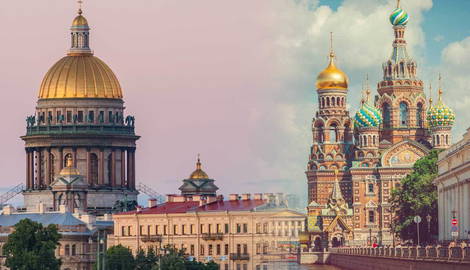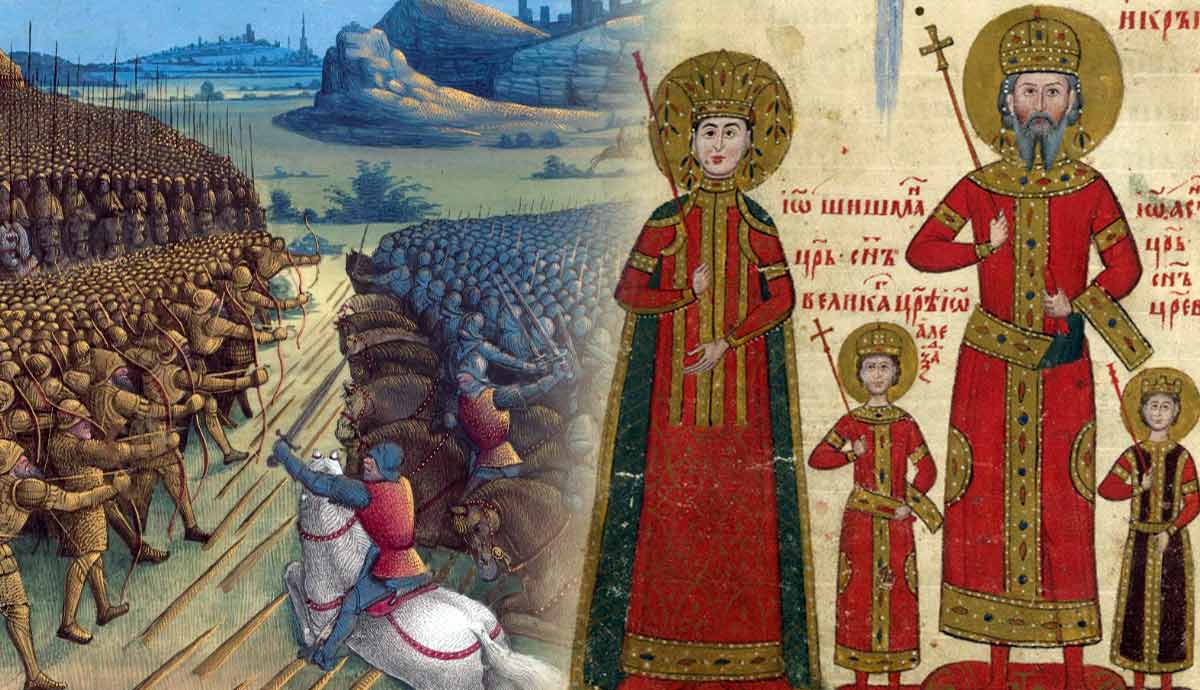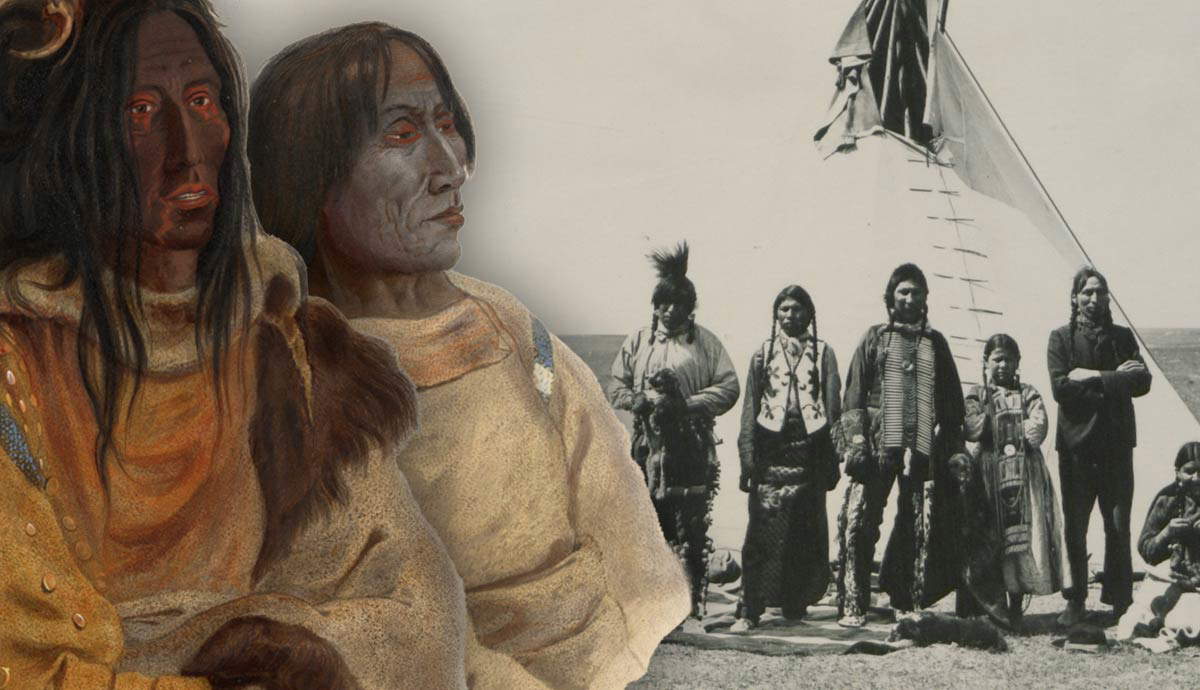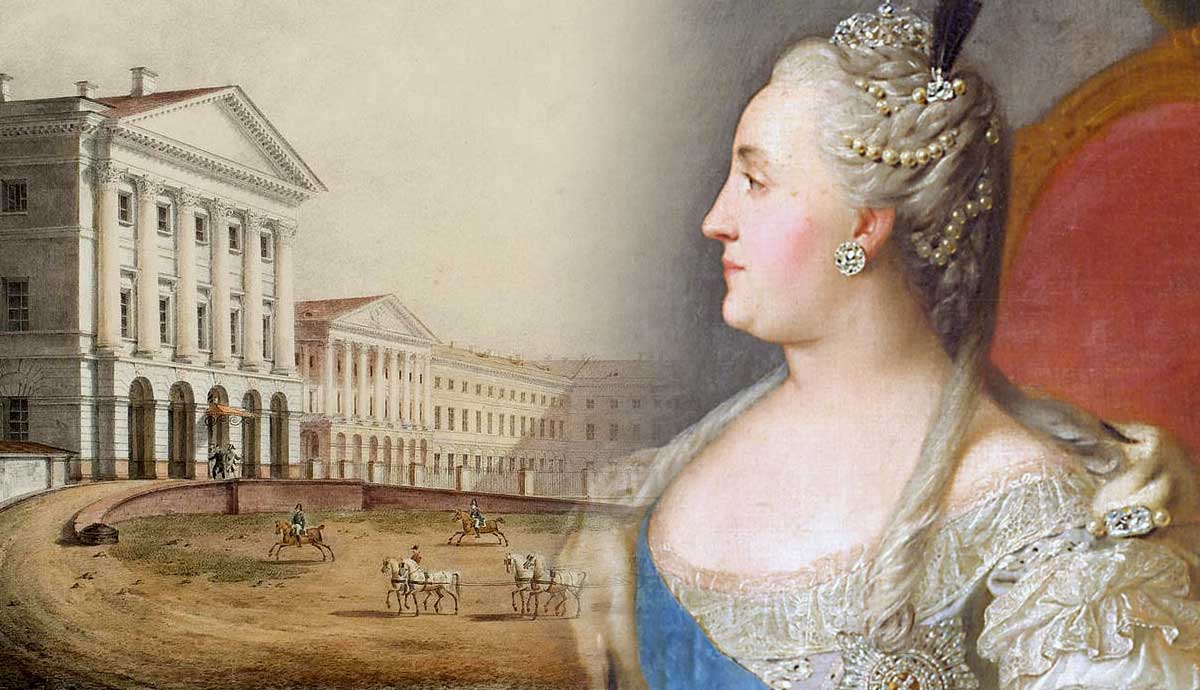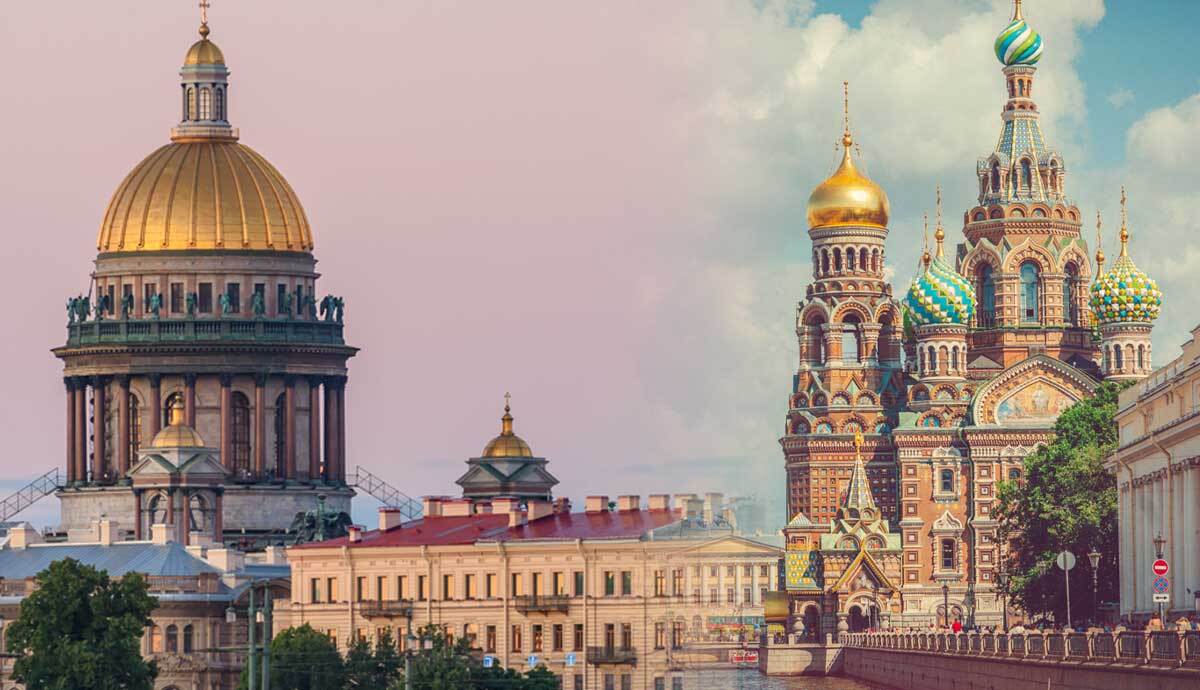
Despite being one of Europe’s youngest cities, St. Petersburg has a rich history, including assassinations, revolution, and war. Founded in 1703 as Russia’s “window to Europe,” St. Petersburg served as the capital of Russia from 1712 until 1918. In 1924, the city was renamed Leningrad and endured Soviet repression as well as a brutal WWII siege. The collapse of communism in the early 1990s brought a new dawn, but the city’s hopes for liberal democracy are being undermined during the presidency of its native son Vladimir Putin.
Window to Europe

On May 27, 1703, Tsar Peter the Great of Russia landed on Hare Island at the mouth of the River Neva near the Baltic, marked a cross on the ground, and declared, “Here will be a city.” He then determined the locations of the first two structures: a cathedral and a humble log cabin for himself. The following month, Peter renamed the site Sankt-Petersburg.
The reality of the founding of Saint Petersburg was more prosaic, and the selection of the site was more down to chance than intention. As a boy, Peter had been fascinated by ships. He learned about the commercial potential of maritime trade in Moscow’s foreign quarter and hoped to build his own fleet.
In 1697-98, Tsar Peter embarked on a European tour and spent several months learning and observing shipbuilding techniques in Dutch and British shipyards. However, Russia’s only ports at the time were in the Arctic, frozen for most of the year. In order to achieve his ambitions, he first needed a warm water port.
Peter had initially intended to build a fleet at Taganrog on the Black Sea, but access to the Mediterranean was controlled by the Ottoman Empire, Russia’s rival to the south. In 1700, the tsar formed an alliance with Denmark and Poland and attacked Sweden, launching the Great Northern War. Though the coalition suffered several defeats in quick succession, Peter fought back, capturing the Swedish fortress of Nyenskans on the Neva in May 1703, opening up Russia’s “window to Europe.”
Growing Pains

As the Swedes still controlled the northern bank of the Neva, Peter’s priority was to protect the settlement by building a star fort on Hare Island, the Peter and Paul Fortress. Thousands of peasants and prisoners of war were conscripted for the task, which took five months to complete under the supervision of Peter’s advisor, Alexander Menshikov, who was appointed governor-general. The death of many laborers in the swampy conditions inspired St. Petersburg’s grim nickname, the City Built on Bones.
The nascent city was not secure until 1709 when Peter defeated Charles XII at the Battle of Poltava in Ukraine. Although Russia remained at war with Sweden until 1721, Poltava was the turning point that saw Russia replace Sweden as the leading power in northern Europe. In 1712, St. Petersburg officially became the capital of Russia.
While the Swedish threat diminished, St. Petersburg remained at the mercy of the elements. There have been over 300 documented floods during the city’s history, the first of which took place within a few months of its foundation. A flash flood in September 1706 saw the water level rise by 2.62 meters, but the deadliest flood in the city’s history struck in 1824, claiming hundreds of lives.
The initial plans for the city were developed by the Swiss architect Domenico Trezzini, who began work on the Peter and Paul Cathedral in 1712. Under Trezzini’s plans, the city center was to be on Vasilevsky Island on the northern bank of the Neva. Prominent buildings on the island include the Twelve Collegia, intended to house the government ministries, and the Menshikov Palace, which was grander than any of the tsar’s residences.
Jewel of the Baltic

As St. Petersburg continued to expand, by the late 1730s, a new city center was conceived on the south bank of the river, with the Admiralty Building opposite the Twelve Collegia at the head of three major avenues. The easternmost branch, Nevsky Prospekt, led to the Alexander Nevsky Lavra, the monastery established by Peter the Great on the supposed site of the medieval Russian prince’s victory over the Swedes at the Battle of the Neva in 1240.
Over the course of the 18th century, Nevsky Prospekt would become the most fashionable street in the whole of St. Petersburg, hosting aristocratic palaces and cultural institutions. Other aristocratic palaces could be found on the Moika and Fontanka Rivers or the extensive system of canals that earned Petersburg the nickname of the “Amsterdam of the North.”
Some of the city’s most famous buildings were built during the reign of Empress Elizabeth, the daughter of Peter the Great, who ruled between 1741 and 1762. Elizabeth, a woman with extravagant artistic tastes, commissioned the Italian Baroque architect Bartolomeo Rastrelli to build the Winter Palace on the southern bank of the Neva opposite Hare Island. Rastrelli was also responsible for building the opulent Catherine Palace at Tsarskoe Selo, the imperial family’s summer retreat 15 miles south of the capital.
Imperial Splendor

In 1762, Catherine II of Russia (Catherine the Great) took the throne after deposing her husband, Peter III. As a German princess without a drop of Russian blood in her veins, she sought to legitimize her rule by commissioning a monument of Peter the Great from French sculptor Étienne-Maurice Falconet. Nicknamed the “Bronze Horseman,” the tsar is seated on a rearing horse facing the Neva, which stands on a pedestal made from a 1,500-ton rock transported from the Gulf of Finland.
Catherine’s son and successor, Paul I, an eccentric individual inspired by tales of medieval European chivalry, built the imposing Mikhailovsky Castle on the left bank of the Fontanka River. He moved into the residence in early 1801 while the castle was still unfinished and was killed in a palace coup in March.
Paul had commissioned Andrey Voronikhin to build Kazan Cathedral, whose semicircular colonnade facing Nevsky Prospekt is reminiscent of St. Peter’s Basilica in Rome. The cathedral was completed in 1811 and served as a depository for trophies of war captured from Napoleon in 1812. Field Marshal Mikhail Kutuzov was buried there in 1813, and statues of Kutuzov and Mikhail Barclay de Tolly were placed in front of the cathedral in the 1830s.
Russia’s victory over Napoleon was further commemorated by the triumphal arch of the General Staff Building opposite the Winter Palace. The neoclassical edifice was built by Italian architect Carlo Rossi in the 1820s and housed the General Staff of the Russian Army, the Finance Ministry, and the Foreign Ministry. In 1834, the 47.5-meter-tall (156 feet) Alexander Column was unveiled in Palace Square in honor of Tsar Alexander I and his role in Napoleon’s defeat.
Poets & Rebels

In December 1825, following the unexpected death of Alexander I at Taganrog, some 3,000 Russian soldiers assembled around the Bronze Horseman at Senate Square to protest against Tsar Nicholas I, who had taken the throne after his elder brother Constantine secretly declined the succession. The officers who led the demonstration supported liberal constitutional reforms and used the confusion over the succession to issue their demands. After a tense stand-off, St. Petersburg governor General Mikhail Miloradovich was killed, and Nicholas ordered his artillery to fire on the rebels.
The Decembrist ringleaders were incarcerated in the Peter and Paul Fortress, and five prominent leaders were executed on the grounds. The famous Russian poet Alexander Pushkin was investigated for his links to the Decembrists but was cleared after Tsar Nicholas offered to be his personal censor. In 1837, as rumors circulated around the city that Pushkin’s wife was having an affair with her brother-in-law Georges-Charles D’Anthes, Pushkin challenged him to a duel in the fields to the north of the city and was mortally wounded. He was taken to his apartment on the River Moika, where he died the following day.
The second half of the 19th century saw increasingly radical opposition to the tsarist regime, and the reforming Tsar Alexander II had survived several assassination attempts until March 1881, when he succumbed to a bomb thrown at his carriage at the Catherine Canal, where his son Alexander III would build the Church of the Savior on Spilled Blood.
War & Revolution

Political violence in St. Petersburg intensified at the turn of the 20th century. In January 1905, a mass demonstration petitioning Tsar Nicholas II for constitutional reform was ruthlessly put down by Cossacks in Palace Square. The incident sparked the Revolution of 1905, throwing the empire into political turmoil for a whole year.
In October 1905, as part of an effort to end the revolution, Nicholas II issued a manifesto promising an elected representative assembly or State Duma, which opened in April 1906 and met at the Tauride Palace in the east of St. Petersburg. The Duma initially proved too radical for the tsar, and it was only in 1907, after restricting the franchise, that the tsar enjoyed better relations with the assembly.
Following Russia’s entry into WWI in 1914, the city of St. Petersburg was renamed Petrograd to make it sound less German. Military setbacks at the front and economic crises at home combined to push the empire toward revolution. Both radicals and conservatives were appalled by the influence of Grigory Rasputin, the holy man who gained the imperial family’s confidence through his supposed ability to cure the hemophiliac Tsarevich Alexei. In December 1916, Rasputin was murdered by Prince Felix Yusupov at the Yusupov Palace by the River Moika.
In February-March 1917, Tsar Nicholas was overthrown by the liberal Provisional Government. In October-November, the Provisional Government fell to Vladimir Lenin’s Bolsheviks after the Red Guards stormed the Winter Palace on November 7th. With German armies approaching Petrograd, Lenin moved the capital to Moscow in March 1918.
The Blockade

In 1924, Petrograd was renamed Leningrad following Lenin’s death in January. While General Secretary Joseph Stalin was consolidating his power as leader of the Soviet Union, he appointed his ally Sergei Kirov as Leningrad party boss in 1926. Kirov’s assassination in December 1934 was a catalyst for Stalin’s purge of senior party officials in the mid-1930s, and it is widely suspected that Stalin ordered the assassination to create a pretext for a purge and to rid himself of a potential rival in the process.
In June 1941, Nazi Germany invaded the Soviet Union. On September 8, Germany’s Army Group North cut off access to Leningrad and began a brutal siege that would last for almost 900 days, leading to mass starvation and the death of over one million civilians. Leningrad remained defiant, and the composer Dmitry Shostakovich, who worked as a firefighter during the war, composed his epic 7th Symphony, nicknamed the Leningrad Symphony, honoring the city’s resistance to the invaders.
While the Soviets managed to resupply Leningrad via an ice road across the frozen Lake Ladoga during winter, it was not until January 1943 that the Soviet army’s Operation Iskra broke the encirclement and opened a narrow road to resupply Leningrad. It took a further year before the blockade was fully lifted on January 27, 1944. During their retreat from Leningrad, the Germans burned the imperial palaces outside the city. The palaces were rebuilt by the Soviet authorities over several decades.
Back to the Future

Following the war, construction work resumed on the Leningrad Metro, completed in 1955. During the following decades, large numbers of apartment blocks sprang up in the city’s suburbs, leading to many of the city’s inhabitants moving out of the communal apartments in the city center.
On June 12, 1991, Leningrad held a mayoral election won by the liberal reformer Anatoly Sobchak, whose ally Boris Yeltsin was elected President of Russia on the same day. The same day, a referendum was passed that would see the city revert to the name of St. Petersburg.
Following the collapse of the Soviet Union, Sobchak chaired the constitutional assembly that led to the adoption of the Constitution of the Russian Federation in 1993. During Sobchak’s tenure, the day-to-day administration of St. Petersburg was left to the deputy mayors, among whom was his protégé, Vladimir Putin. In 1999, Putin was appointed prime minister by Yeltsin and succeeded the latter as president the following year.
While St. Petersburg’s city center has remained largely unchanged since it was designated a World Heritage site in 1990, in 2006, the energy company Gazprom proposed building a 400-meter-tall (1,312 feet) skyscraper in the city center. Following the intervention of President Dmitry Medvedev in 2010, the project was moved out of the city center to the Lakhta district. Completed in 2019, the Lakhta Center is the tallest building in Europe and has served as Gazprom’s headquarters since 2021.
